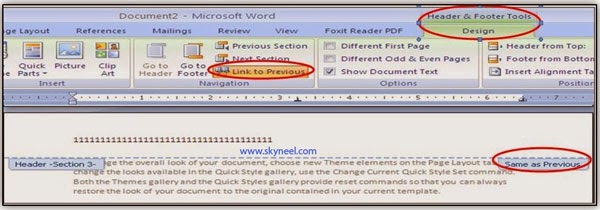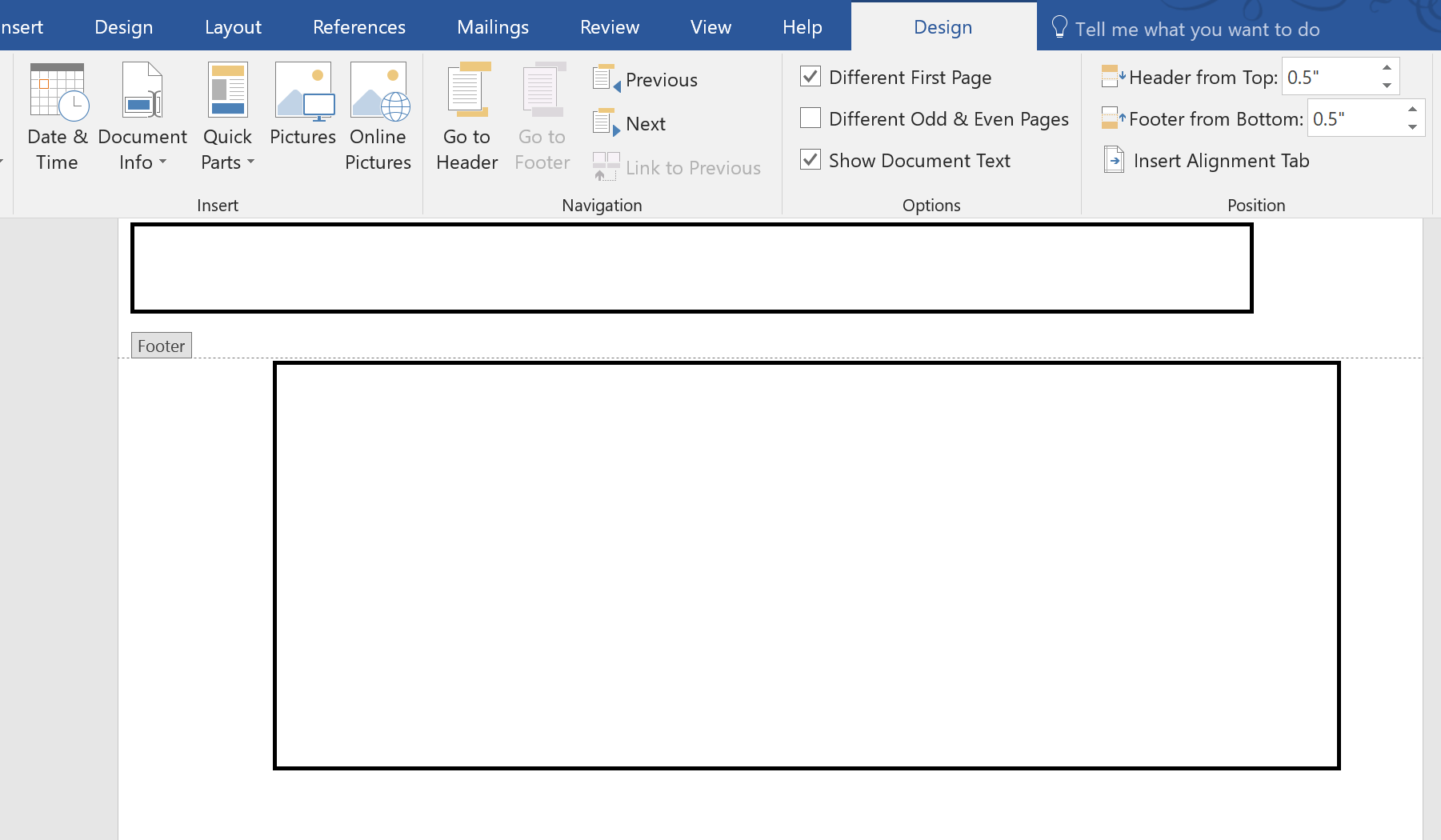Word Different Footer On Each Page
What's Hot at TechRepublic.Headers and footers are easy to implement as long as the same text appears on every page in your document. Beyond the basics, this feature often confuses users. The key to working successfully with headers and footers is this: headers and footers belong to sections, not the document or individual pages, and a document can have a unique header or footer for every section.Changing a document's header of footer is as simple as adding a new section, almost. In truth, changing a document's header is a three-step process:. Insert a page break.

Break the link between the previous section and the new section. Change the header/footer.LEARN MORE: Step oneWhen you need a different header of footer, the first step is to enter a section break as follows:. Click the Page Layout tab. In the Page Setup group, choose the appropriate break option from the Breaks dropdown. In 2003, choose Break from the Insert menu. Choose a break from the resulting dialog and click OK.
Where to put the section break might cause some confusion. Generally, you'll insert a Next Page section break at the bottom of the page that falls just before the page where you want the new header or footer to begin. For example, if you want the new header to begin on page 4, insert the Next Page section break at the bottom of page 3 (see the next figure). Step twoAfter adding a section break, you need to break the link between the previous section and the newly added section, as follows:. Double-click in the new section's header space. In the context Design tab, click the Link To Previous option in the Navigation group. In Word 2003, choose Header and Footer from the View menu to open the header in edit mode.
Footer Different On Each Page In Word
Then, click the Link To Previous button in the Header and Footer toolbar to break the link.Breaking the link does not remove an existing header or footer from the new section.I increased the header's font size so you can compare it to the header in the next figure (below). Also, notice that the Link To Previous option is dimmed.SEE: (Tech Pro Research) Step threeIt's important to note that the existing header is still part of the new section. Breaking the link to the previous section won't change anything-it just allows you to make changes. At this point, you're ready to change the header. Simply change the text, field, or object as you normally would.Worth notingWhen working with section breaks, use the Show/Hide option (on the Home tab in the Paragraph group) to display them. Accommodating section breaks is much easier if you can see them.

In addition, if you delete a section break, you'll lose changes you made to that section's header/footer.SEE: (Tech Pro Research) A bonus Microsoft Word tipFrom the article by Susan Harkins:Let Word decide: Word is full of defaults that are adequate in most circumstances. However, those defaults can be annoying if you're constantly having to reset options. Fortunately, Word lets you take the wheel if you want to. Change those defaults and eliminate those tedious steps you take every time you start a new document. For more on changing Word defaults, read.This bonus MS Word tip is also available in the free PDF.Editor's note on March 1, 2019: This MS Word article was first published in April 2012. Since then, we have included a video tutorial, added a bonus tip, and updated the related resources.
